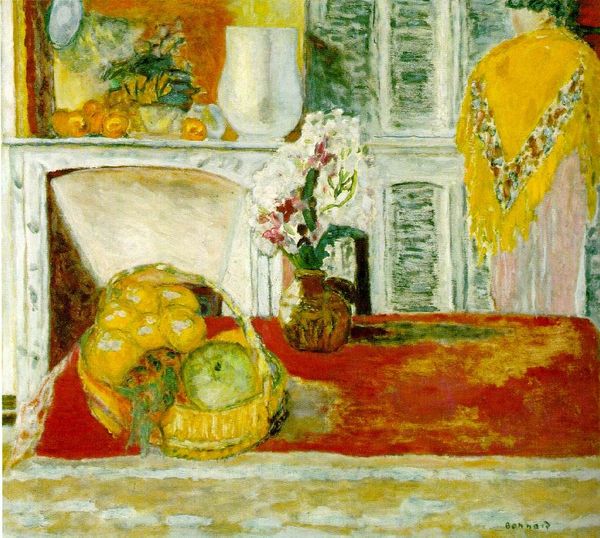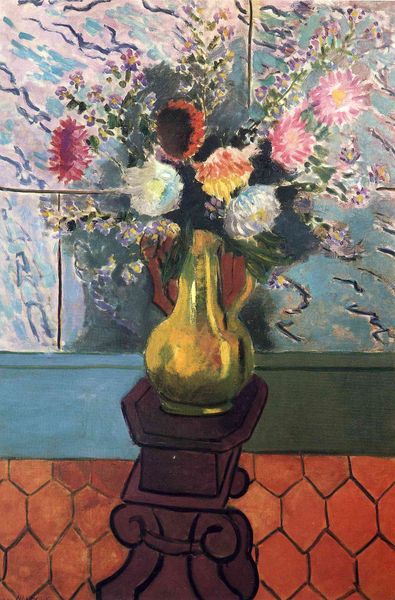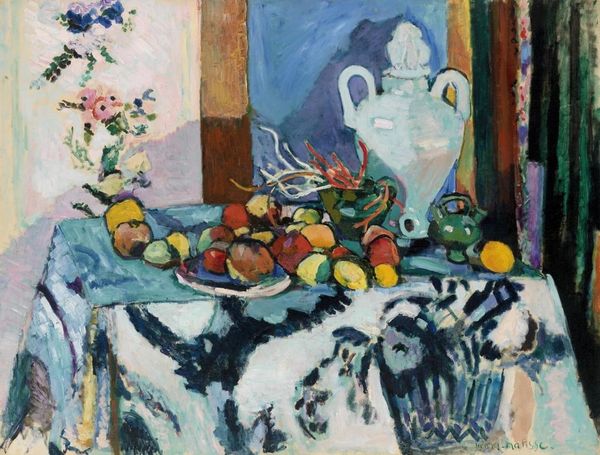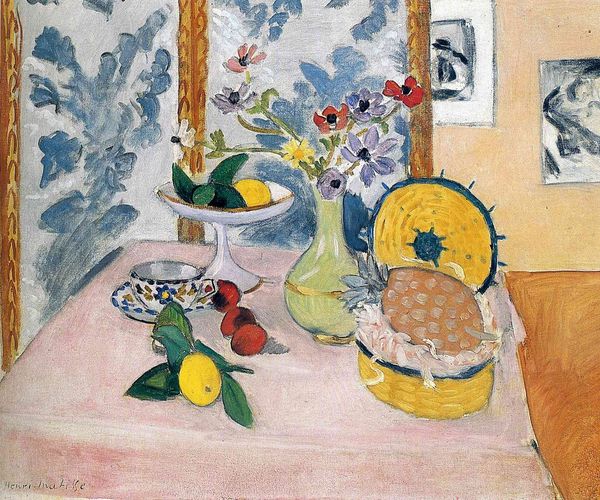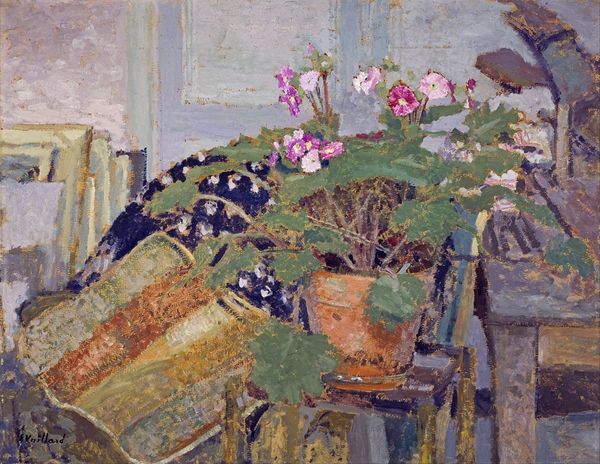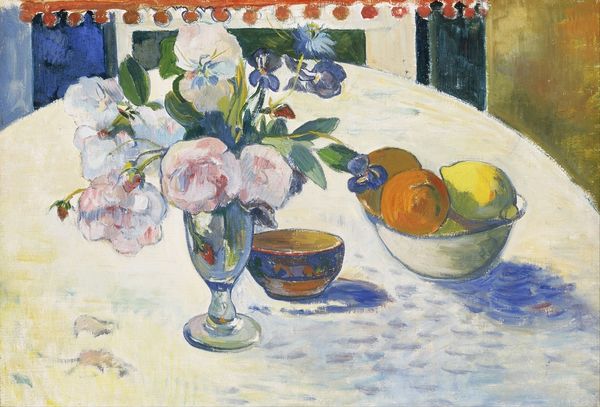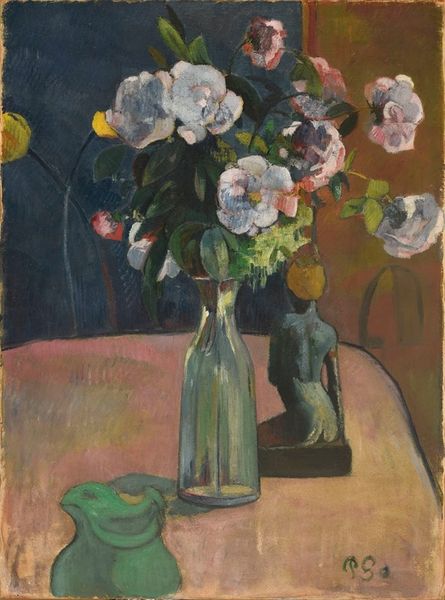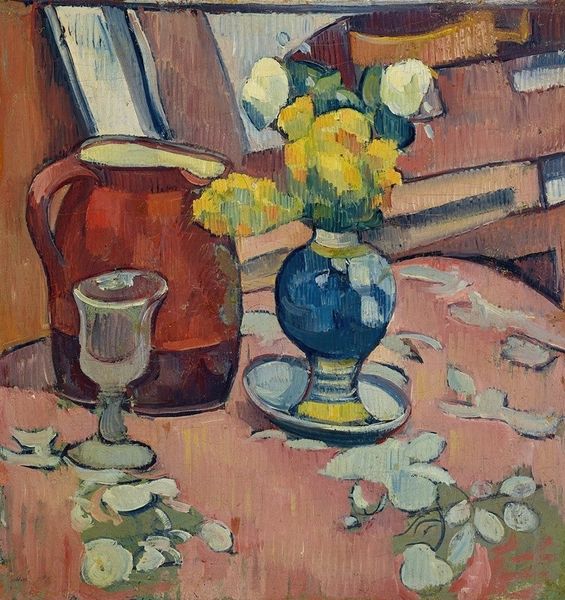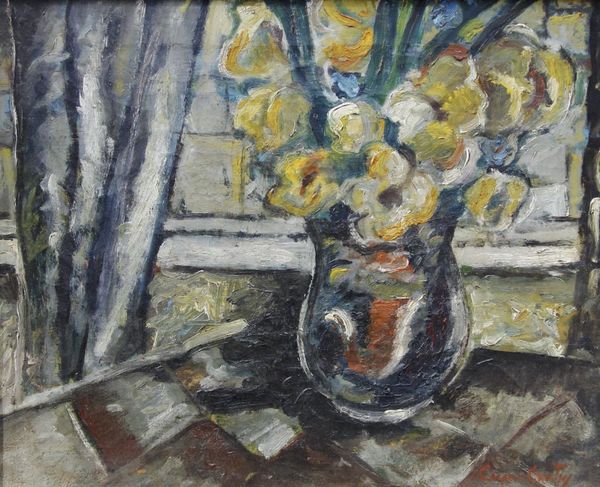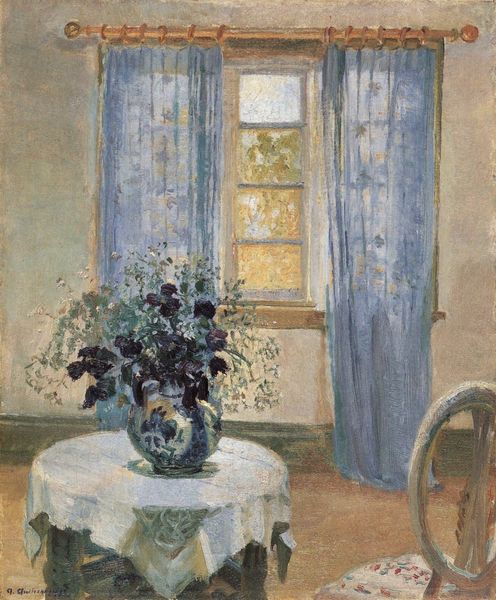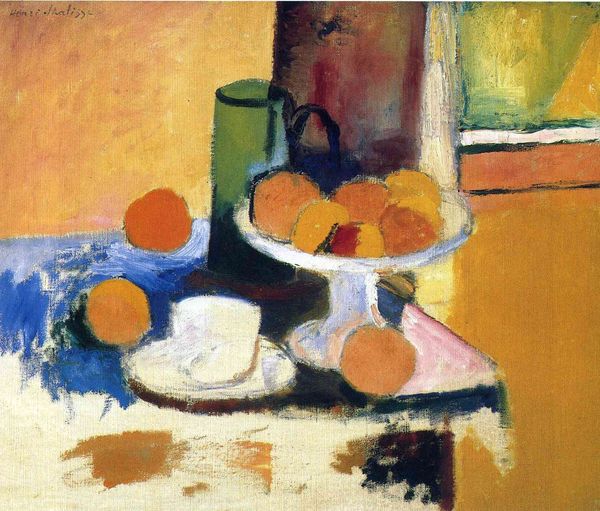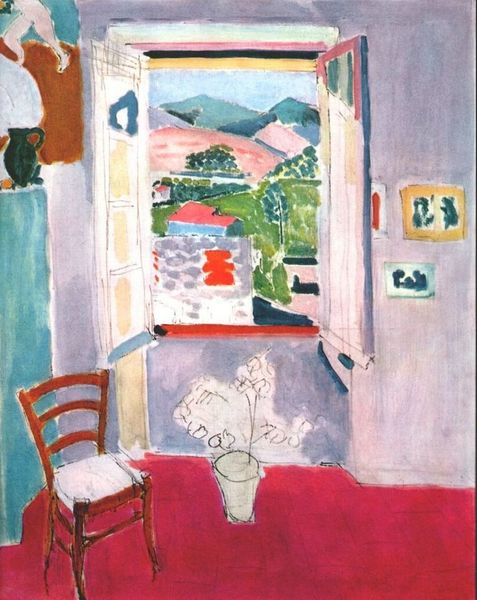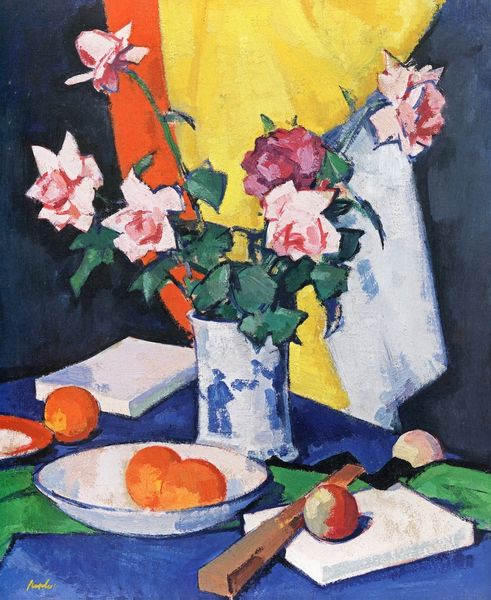
Dimensions: 82 x 658 cm
Copyright: Public domain US
Curator: This is "Flowers in front of a Window" painted by Henri Matisse in 1922. Editor: It strikes me immediately as so inviting! A cozy domestic space contrasted with the vastness of the sea and sky beyond. The colors feel comforting. Curator: Absolutely. Matisse often explored this theme of the interior versus exterior, using vibrant colors to create a sense of harmony and balance. It’s fascinating to think of how his practice shifted visual art away from academic historical narratives, moving instead to focus on sensory experiences. Editor: The way he's flattened the perspective and employed such a bold palette feels almost defiant. Like a conscious rejection of traditional artistic hierarchies, prioritizing subjective emotion over objective representation. Do you agree that it challenges the accepted roles of art and the artist at the time? Curator: In a way, yes. His fauvist sensibilities allowed him to prioritize an art of pure sensation. We see his interpretation of impressionism with the application of oil paint, resulting in a delightful painterly surface that captures the atmosphere. But the flattening, the heightened color… they also situate it firmly within the evolution of modernism. He sought to express emotions directly. Editor: It’s like he’s building his own world. He takes simple everyday scenes – flowers, fruit, a cityscape – and elevates them. To be modern at this time meant radically questioning everything that had come before – questioning systems of representation, but also class, race, gender, and the colonial project. The composition invites you to gaze. The flowers almost obscure and act like a filter for the exterior world. This challenges not only perception but traditional social hierarchies as well. Curator: He’s capturing the essence of the place and his emotional reaction to it. Looking at the painting now, I wonder about its location. Editor: Me too! We know this piece currently resides in a private collection. Its accessibility reflects larger societal imbalances. How are the works displayed? What implications do museum spaces and public exhibitions carry in representing identity, race, gender, class? These are key considerations. Curator: Indeed. Thank you, I appreciate the perspective and its relation to society and the power that images wield. Editor: Thank you. Hopefully, we’ve sparked some deeper thoughts as you continue to explore art in new ways.
Comments
No comments
Be the first to comment and join the conversation on the ultimate creative platform.
